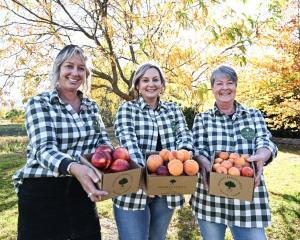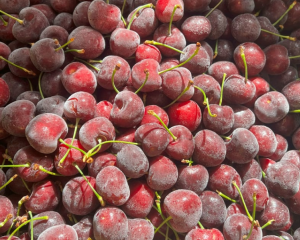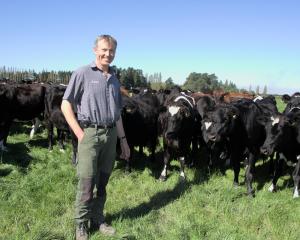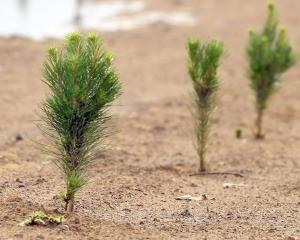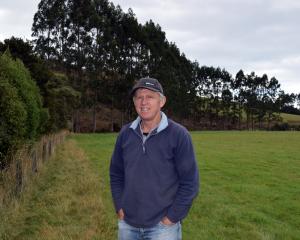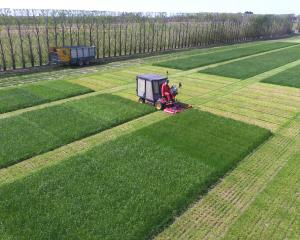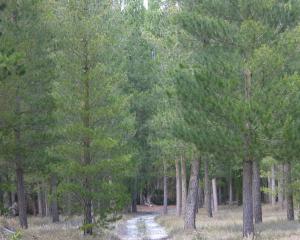
Behind it stands Dr Jim Gibbs, an Australian vet and university lecturer from Canterbury. He has devoted much of his career to fodder beet’s establishment as a winter grazing crop in New Zealand, and debunked myths about its toxicity to the international farming world.
He was guest speaker at the recent Catalyst Performance Agronomy field day at Altavady farm near Oamaru, one of dozens he attends every year.
The sometimes controversial root crop has taken Dr Gibbs on quite a journey.
The former Queenslander has family roots in generations of beef, sheep and grain farmers. He worked in large animal practice with cattle in northern Australia and then dairy cows in Tasmania, followed by a stint in the United Kingdom.
After 10 years, he decided to do a PhD in ruminant nutrition. Then he came to New Zealand and began as a lecturer at Lincoln University, in 2004.
His earliest work was on highly managed dairy pastures in the South Island and what effect they had on ruminant function, and lameness.

In those early years, the project had 70 farms across the South Island, a key factor in the knowledge base he was gaining.
"I’d physically collect lameness data and pasture samples from all those farms every month. It gave me the opportunity to listen closely to farmers, to see up front what was working for them and what profitable farming in New Zealand really needed. I didn’t realise how wide and valuable that network was until later."
His PhD students started picking up and studying various aspects of ruminant function. Out of that came a whole suite of studies that demonstrated previously unknown features of rumen function on "the best grass in the world", in the South Island. Rye grass and the unique way in which a cow adapted to that diet was the focus.
In 2008-09, an extension of that in-depth study began with winter crops: first kale, and then fodder beet.
"Somebody suggested looking at a crop no-one had ever heard of — fodder beet. There were about 50ha [planted] in New Zealand but no-one knew what it was. DairyNZ funded me to have a closer look."
For 500 years, it had been fed in the UK and Europe but never grazed, because of the perception that the leaves were toxic and the plant was poisonous.
And that idea had been instilled in New Zealand.
But the dairy industry was getting "sick of brassicas, especially kale" because of the health problems associated, undependable yield and the poor liveweight gain.
"A lot of dairy farmers were looking for change."
Brendon Woods, of Burnham, Canterbury, was the first to plant it, "and if there’s a godfather of fodder beet, that’s the man" .
"Some of his cattle died, and everyone said, ‘I told you so,’ including the local vet.
"He told him to stop growing it and that he must stop feeding it, but he said no, there’s a future for that ..."
"He had seen the ones that didn’t die did very well, and they’re a testimony to that man’s perseverance."
By a stroke of luck, the farm was a participant in Dr Gibbs’ lameness project.
"And so, working through this with Brendon, it all started to come together."
In 2009, Dr Gibbs had a wintering block at Lincoln with fistula cows, animals surgically fitted with rumen windows that allowed direct sampling.
What became immediately apparent in that very first year of study was that the affected cows all died between the 7th and 10th day on fodder beet.
"I realised in a thunderclap that this meant it was highly unlikely to be oxalate poisoning, which has a different course of disease.’’
Oxalate poisoning can cause metabolic issues in ruminants.
The cause was more likely to be ruminal acidosis, when quantities of sugar or starch in the diet are fermented in the rumen faster than the cow can remove them, causing the pH to drop and the rumen to stop working and death.
It was also a management issue; a gradual introduction removed the problems, because the rumen adjusted to clearing the acids quicker over about two weeks, just as in feedlots.
Farmers quickly made the changes and fodder beet production in New Zealand went from 50ha to 70,000ha inside 10 years, making it the fastest forage uptake in New Zealand history.
Another thunderclap moment happened for Dr Gibbs when it was discovered that some dairy cows were getting too fat on fodder beet, even in the cold and wet winter grazing systems.
"One day, watching a mistake I had made in ignoring the liveweight gain of some wintering dairy cows, I did my sums on what metabolisable energy intake must have been ... and then I realised if it can do that to dairy cows, it can do that for beef cattle."
That led to more trial work on beef cattle with Brent Fisher, of Silverstream Charolais in Canterbury, which immediately demonstrated the productivity and profit gains available.
From this beginning the system flourished and a new sector of the New Zealand beef industry was established finishing steers and heifers on the crop.
This led to more work looking at sheep wintering systems and working out the peculiarities of each.
"But as soon as we worked it out, we passed it on to the farmers. In return, we got to see what worked, and got the feedback on what needed more work.
‘‘It has been very satisfying to see these systems grow and work for New Zealand farmers. That is what agricultural research is supposed to be, I feel."
These beet grazing systems were picked up by farmers in different countries and have grown strongly across Latin America, Australia, the United States, the UK and, ironically, Europe.
However, arguably some of the most exciting work of the 13 years of research and trials was happening right now, with a raft of trials looking at the crop’s impact on soil carbon inputs — which were very large — and busting some myths about the amount of nitrates escaping from winter grazing.
It was even thought with its large, active 3m root system that fodder beet could be used as a mop-up crop to rehabilitate soils.
It had been an exciting decade to be involved in such ground-breaking work and to have received recognition at home and abroad.
"The way I look at it, it was serendipitous. Early on, it was rumen work in unexplored pastures, and then fodder beet followed on, and at the right time. I’m a very blessed individual.’’
- By Mary-Jo Tohill


